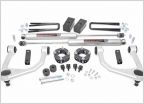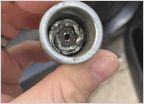-
Welcome to Tundras.com!
You are currently viewing as a guest! To get full-access, you need to register for a FREE account.
As a registered member, you’ll be able to:- Participate in all Tundra discussion topics
- Transfer over your build thread from a different forum to this one
- Communicate privately with other Tundra owners from around the world
- Post your own photos in our Members Gallery
- Access all special features of the site
Tire pressure questions
Discussion in 'Wheels & Tires' started by TundraGuy98, Oct 10, 2024.


 Aftermarket TPMS from amazon?
Aftermarket TPMS from amazon? Chinese Made Falken WildPeak A/T Trail...
Chinese Made Falken WildPeak A/T Trail... 5 lug to 6 lug conversion...is it possible?
5 lug to 6 lug conversion...is it possible? 35s and no cutting?
35s and no cutting? Stupid Locking TRD Lugs
Stupid Locking TRD Lugs












































































